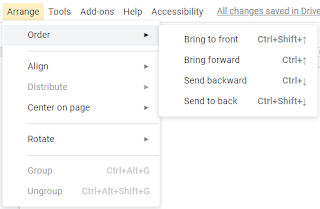How do you make a Gif Accessible? The question came up after I sent off a Gif of some teenage Caucasian boys flashing gang signs in a wannabe fashion. I am always amazed at the world’s Gif library and do wonder what later generations will think of it and us. But I had to ask myself how would I make a Gif accessible?
I was recently introduced to Haben Girma’s newly released book; Haben: The Deafblind Woman Who Conquered Harvard Law. I’ve been supporting the NYC DOE with the accessibility mandates to comply with the Civil Rights Office Agreement Case Number 02-16-1175. This has provoked me to start asking questions about accessibility and changing my habits. I’ve admittedly found the official rules a bit difficult to decipher. And if you ask one person involved with accessibility another person will have a different answer. Thankfully there’s a plan to untangle some of these rules and questions about them. We currently use the W3C's Web Content Accessibility Guidelines (WCAG). We will be moving toward Silver Standards, “not a bullet but a level”. Silver is aimed to standardize things much more succinctly so we can all be on the same page.
I was recently introduced to Haben Girma’s newly released book; Haben: The Deafblind Woman Who Conquered Harvard Law. I’ve been supporting the NYC DOE with the accessibility mandates to comply with the Civil Rights Office Agreement Case Number 02-16-1175. This has provoked me to start asking questions about accessibility and changing my habits. I’ve admittedly found the official rules a bit difficult to decipher. And if you ask one person involved with accessibility another person will have a different answer. Thankfully there’s a plan to untangle some of these rules and questions about them. We currently use the W3C's Web Content Accessibility Guidelines (WCAG). We will be moving toward Silver Standards, “not a bullet but a level”. Silver is aimed to standardize things much more succinctly so we can all be on the same page.
For me questions still come up. Admittedly earlier in the week I had to google how to make an emoji accessible. I wanted to write 😉 which is semi-colon parentheses, ;). I wondered if a screen reader would read it as “winky face”. It was a hit and miss depending on what screen reader and how the emoji was created. So I googled how to make it more accessible. For one thing we describe emoji’s when we are trying to be accessible. So the pink heart is “pink heart”. And smiley face is “smiley face”. And poop is “chocolate ice cream”. Okay. Fine. It’s “poop”. But we can add these details through a particular accessibility comment in the HTML called Aria aria-label=“poop” in the tag of the emoji would make the screen reader say “poop”. If you have a screen reader installed here’s your chance to make your computer say “poop” 💩.
But back to the Gifs. How do we make something so culturally relevant accessible? Videos have closed captioning and images have alt text. A Gif is somewhere between. (I’m going to also need to test if the screen reader says “jif” or “gif”) but just like images they need descriptions. Alt text will allow you to provide a description. Well that was a simple answer to a curious question.
But wait! Gifs are not inherently accessible!
Gifs loop and have a frame rate which could create a blink in the range of less that 3 times a second which is known to produce seizures. They can be distracting because they go on forever and auto start. You can't stop them since they have no controls. So how do you correct this? The easiest way is to make it a movie. I groaned when I read this. Because I include Gifs in my training slides frequently because they just repeat without the user having to press play. I do want to rebel here but I recognize I would just be disenfranchising millions of people from accessing my materials. If it’s between aesthetics to avoid the cultural shift of clicking play and keeping knowledge from many who need and want it…? Let’s shift our culture. I can’t promise I’ll never use another Gif (and there are ways to make them loop no more that 5 times) but I’ll aim to provide videos with controls stating there is no audio and users should click play along with providing alt text.










